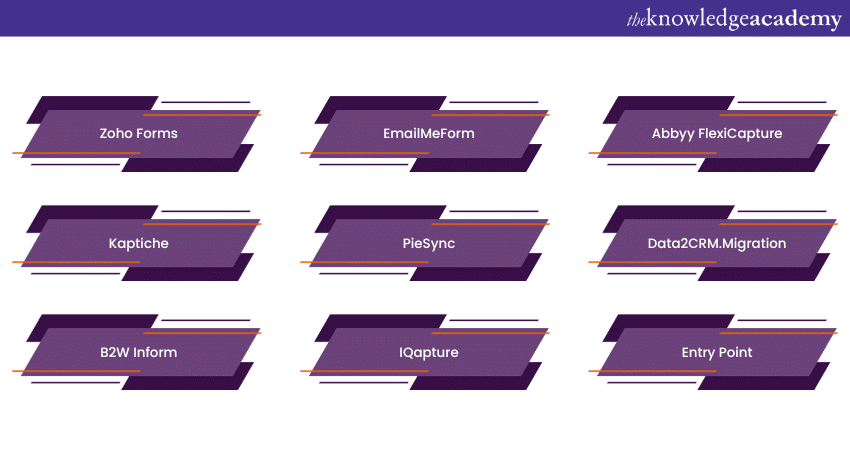We may not have the course you’re looking for. If you enquire or give us a call on 01344203999 and speak to our training experts, we may still be able to help with your training requirements.
Training Outcomes Within Your Budget!
We ensure quality, budget-alignment, and timely delivery by our expert instructors.

Knowing What is Data Entry is an extensive category encompassing diverse occupations like electronic data processing, typing, word processing, and data transcription. Although the common perception involves copying and pasting data from a source to a database, Data Entry professionals can undertake various specific tasks beyond this. This blog is all about decoding this perception.
This blog addresses the question 'What is Data Entry?' and the diverse roles within Data Entry, and the steps to pursue a career in this field.
Table of Contents
1) What is Data Entry?
2) Benefits of working in Data Entry
3) Different types of Data Entry Jobs
4) How to get a job doing Data Entry
5) Key responsibilities of Data Entry experts
6) Skills required for Data Entry
7) List of top Data Entry tools
8) Conclusion
What is Data Entry?
Data Entry is the process of inputting information into a computer or database. It involves typing or copying data from various sources, such as forms or documents, into digital formats. This task ensures accurate and organised records, aiding businesses in managing information efficiently.
Data Entry can include entering text, numbers, or other details, and it is a fundamental part of administrative work across different industries. The goal is to create a reliable and accessible database that supports easy retrieval and analysis of information.
Benefits of working in Data Entry
There are various benefits of working in the Data Entry field that are discussed below:
a) Flexibility: Data Entry jobs often offer flexible working hours, allowing individuals to manage their schedules and strike a balance between work and personal commitments.
b) Accessibility: Many Data Entry positions require minimal qualifications, making them accessible to a wide range of individuals, including those entering the workforce or seeking part-time employment.
c) Skill development: Data Entry roles provide an excellent opportunity to enhance typing speed and accuracy. The repetitive nature of the tasks can contribute to improved keyboard proficiency and computer skills.
d) Entry-level opportunities: Data Entry is a common entry point into the job market. It can be an ideal starting point for those seeking work experience or exploring different industries.
e) Diverse industry presence: Data Entry jobs are found in various sectors, such as healthcare, finance, and administration, allowing individuals to work in different fields and gain industry-specific knowledge.
f) Sense of accomplishment: Completing Data Entry tasks successfully can provide a sense of accomplishment. Meeting accuracy and efficiency targets can boost confidence and motivation in the workplace.
g) Remote work opportunities: With the advancement of technology, many Data Entry roles can be performed remotely. This allows individuals to work from the comfort of their homes, reducing commuting time and costs.
h) Team collaboration: While Data Entry is often an individual task, it may also involve collaboration with other team members, fostering a sense of teamwork and camaraderie within the workplace.
i) Stability: As businesses rely heavily on accurate data, Data Entry roles are often considered essential, providing a degree of job stability even in challenging economic times.
j) Transferable skills: The skills developed in Data Entry, such as attention to detail, organisation, and data management, are transferable to various other roles within the broader professional landscape.
Enhance your Data Entry skills with our comprehensive Data Entry Masterclass - Join now!
Different types of Data Entry Jobs
Several types of Data Entry jobs exist, catering to different industries and specific tasks. Here are some common categories:
a) Numeric Data Entry: This involves entering numerical information such as financial data, statistics, or inventory numbers into databases or spreadsheets.
b) Alphanumeric Data Entry: Entails inputting both letters and numbers, commonly used in processing forms, applications, or surveys.
c) Text Data Entry: Focuses on entering textual information, including transcribing documents, reports, or manuscripts into digital formats.
d) Online Form Entry: Requires inputting data from online forms into databases, often seen in customer registration or survey responses.
e) Image and document Data Entry: This involves extracting information from scanned documents, images, or PDFs and entering it into a digital database.
f) Database Data Entry: Encompasses tasks related to managing and updating databases, ensuring data accuracy and integrity.
g) Data Cleaning and Validation: Requires reviewing and correcting errors or inconsistencies in existing datasets to maintain data quality.
h) Medical Data Entry: Involves handling medical records, transcribing patient information, and ensuring accurate entry of healthcare-related data.
i) E-commerce Data Entry: Focuses on managing product information, updating prices, and ensuring accurate details on e-commerce platforms.
j) Financial Data Entry: Includes entering financial transactions, invoices, and payroll information into accounting systems.
k) Remote Data Entry: Involves performing Data Entry tasks from a remote location, leveraging online tools and communication platforms.
l) Administrative Data Entry: Encompasses a broad range of administrative tasks, such as updating contact information, managing schedules, and handling correspondence.
n) Data Processing: Involves converting raw data into a more usable format, often using software tools to analyse and summarise information.
o) Legal Data Entry: Focuses on handling legal documents and case information and maintaining accurate records within the legal field.
p) Inventory Data Entry: Involves managing and updating inventory databases, tracking stock levels, and ensuring accurate records of available products.
Elevate your career with our PA and Secretarial Courses – Explore courses now!
How to get a job doing Data Entry
To secure a Data Entry job, follow these steps:

1) Complete your secondary schooling
Securing a strong foundation for a career in Data Entry can be achieved through the completion of secondary education or participation in college courses. Another option is engaging in technical training sessions or workshops. Beneficial courses to prepare for a Data Entry career encompass subjects like computer sciences and communications.
2) Finish your internship
Completing an internship is a valuable way to determine if a career in Data Entry is suitable for you. Acquiring experience through voluntary work or applying for a Data Entry internship provides an opportunity to establish connections within the professional realm. This network can prove beneficial as you seek employment in the field.
3) Increase the accuracy and speed of your typing
Enhance your typing skills by consistently engaging with popular software programs. Practice extensively until you achieve a satisfactory typing speed. Utilise various online typing speed games and tests to both refine and assess your typing speed and accuracy.
Key responsibilities of Data Entry experts
A Data Entry clerk is tasked with gathering, arranging, overseeing, and updating data by inputting it into databases and spreadsheets. They may also be responsible for transferring information from physical documents to computer systems. Depending on the role and experience, their duties may include:
a) Gathering and inputting data into the company's system
b) Performing general administrative tasks, such as sorting mail and handling phone calls
c) Electronically and physically managing documents through scanning, printing, and storage
d) Checking data for errors
e) Ensuring accuracy in customer and account records
f) Safeguarding information through regular database backups
Skills required for Data Entry
Several skills are crucial for excelling in the Data Entry field, and spending significant time on your computer can aid in skill development. Follow these steps to stand out:
Language proficiency
Enhance your English language skills by improving reading and writing abilities. Proofreading your work multiple times ensures the delivery of high-quality results.
Computer literacy
Develop proficiency in computer programs for electronic data input and editing. Utilise online tutorials to grasp popular word processing and spreadsheet software. Familiarity with scanners and printers enhances effectiveness.
Interpersonal abilities
Since Data Entry workers interact with colleagues and employers, they improve customer service skills using freely available online resources. Role-playing can be beneficial for practising responses in various situations.
Self-motivation
Strong self-motivation is advantageous, given the potential for remote work or unsupervised tasks. This trait empowers you to complete repetitive or mundane tasks proactively.
Attention to detail
Excel as a Data Entry worker by honing excellent attention to detail. This skill enables focused and high-quality work, ensuring task accuracy and efficiency.
Master the art of minute-taking for effective meetings – Join our Minute Taking Training now!
List of top Data Entry tools
Here, we will provide you with a compilation of top Data Entry tools you must know.

a) Zoho Forms: Zoho Forms simplifies the data management process by enabling the creation of web forms. It allows for the setup of email notifications based on specific requirements and integrates with built-in applications.
b) EmailMeForm: It offers a straightforward HTML form and survey creation application.
c) Abbyy FlexiCapture: It facilitates collecting, processing, verifying, and implementing accurate data in critical processes.
d) Kaptiche: It aids in cost reduction and increased efficiency by streamlining day-to-day operations, minimising inaccuracies in manual entries.
e) PieSync: It is a no-code platform that enables users to sync their businesses and customers seamlessly.
f) Data2CRM.Migration: It contributes to effortless data migration.
g) B2W Inform: assists in collecting and recording quality data, focusing on improving coverage in areas such as safety, human resources, and more.
h) IQapture: It is an electronic data capture tool that provides live online training and education through documents and webinars.
i) Entry Point: comprises user-friendly tools for creating and installing various custom Data Entry applications, offering built-in options for authentication, export, and editing.
Conclusion
The future of Data Entry relies heavily on Artificial Intelligence (AI) and Machine Learning (ML), allowing for instant access to detailed information and swift decision-making. Large companies handling vast volumes of data benefit from centralising information, optimising processes, and understanding customer preferences. Data Entry professionals must stay updated with emerging technologies to excel in this evolving field.
Elevate your productivity with precision typing by joining our Touch Typing Training. Sign up today!
Frequently Asked Questions
Upcoming Business Skills Resources Batches & Dates
Date
 Data Entry Masterclass
Data Entry Masterclass
Fri 31st May 2024
Fri 26th Jul 2024
Fri 27th Sep 2024
Fri 29th Nov 2024







 Top Rated Course
Top Rated Course



 If you wish to make any changes to your course, please
If you wish to make any changes to your course, please


